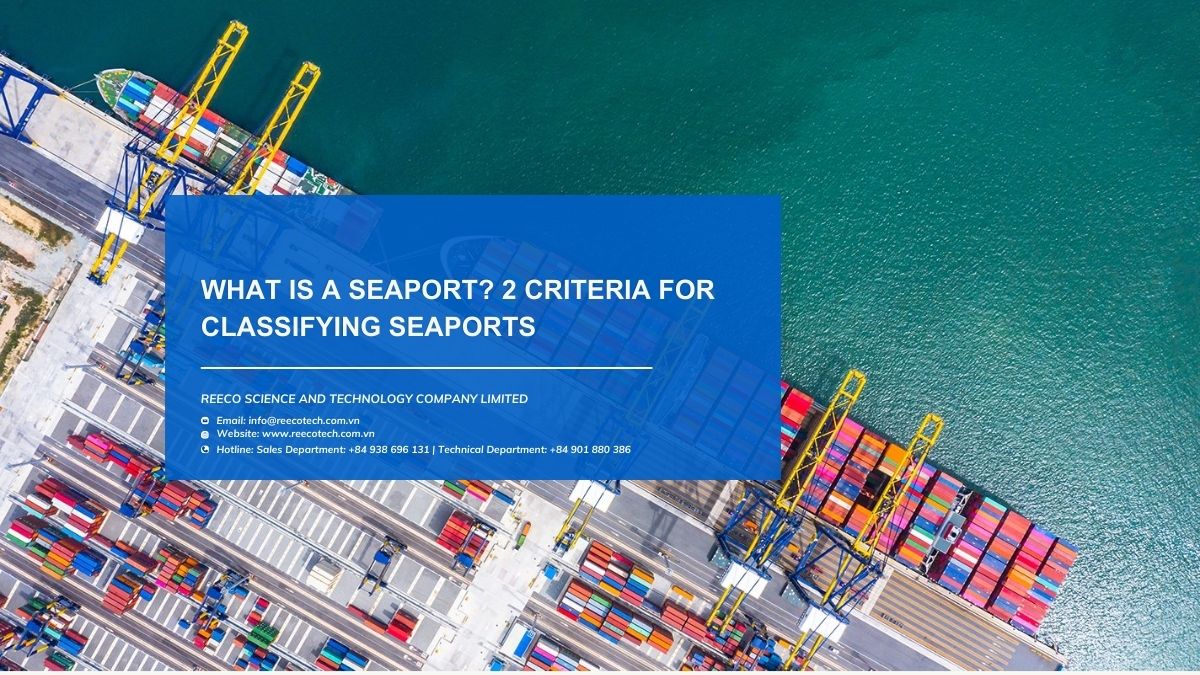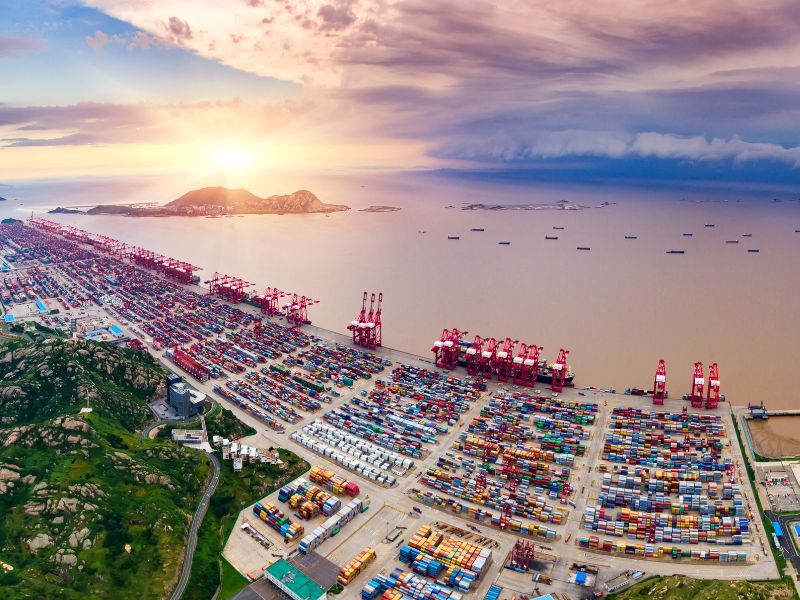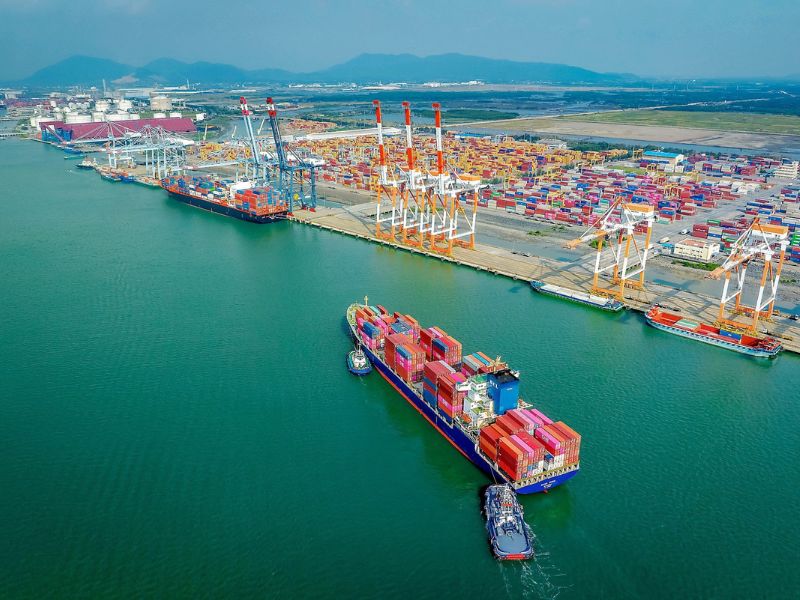The classification of seaports must be based on specific criteria and regulations. So, how many types of seaports are there and what are the criteria for classifying them? Let’s delve deeper into this topic with Reecotech in the article below!

What is a seaport?
According to Article 73, Clause 1 of the Vietnam Maritime Code 2015, a seaport is an area comprising both land and water areas, equipped with infrastructure and facilities to serve vessels upon arrival and departure, for the loading and unloading of cargo, the embarkation and disembarkation of passengers, and to provide other services. A seaport may consist of one or more berths, and each berth may have one or more piers.

Seaport Classification
According to Article 75 of the Maritime Law of 2015, seaports are classified into the following categories:
-
- Special Seaport: A large-scale seaport serving the socio-economic development of multiple regions or the entire country, and functioning as an international transshipment port or a national gateway port.
- Type I Seaport: A large-scale seaport serving the socio-economic development of multiple regions or the entire country.
- Type II Seaport: A medium-scale seaport serving the socio-economic development of a region.
- Type III Seaport: A small-scale seaport serving the socio-economic development of a locality.
=> For more information, please refer to: BlueEco berthing and system (BlueEco-BAS)

Criteria for Classifying Seaports
According to Article 3 of Decree 76/2021/ND-CP, the criteria for classifying seaports in Vietnam include:
Criteria for the scope of influence of a seaport: This is assessed based on the overall planning for the development of the seaport system approved by the competent state agency, with the following indicators:
-
- Seaport serving the socio-economic development of the whole country or multiple regions, and having the function of international transshipment or international gateway port.
- Seaport serving the socio-economic development of the whole country or multiple regions.
- Seaport serving the socio-economic development of a region.
- Seaport serving the socio-economic development of a locality.
Criteria for the scale of a seaport: This is assessed based on the throughput of goods and the size of vessels received at the port, with the following indicators:
-
- Throughput of goods at the seaport.
- Size of vessels received at the seaport.

Criteria Table for Evaluating and Classifying Seaports
Below is the criteria table for evaluating and classifying seaports:
| No. | Criteria for Evaluating and Classifying Seaports | Points (Maximum) |
|---|---|---|
| A | Scope of the seaport’s influence | 50 |
| Serving the socio-economic development of the whole country, or multiple regions, and having international transshipment or gateway functions | 50 | |
| Serving the socio-economic development of the whole country or multiple regions | 40 | |
| Serving the socio-economic development of the region | 30 | |
| Serving the socio-economic development of the locality | 20 | |
| B | Scale of the seaport | 50 |
| I | Cargo throughput of the seaport | 30 |
| 1 | Dry and general cargo throughput | |
| Over 4 million tons/year | 12 | |
| From 2 to 4 million tons/year | 10 | |
| From 1 to less than 2 million tons/year | 8 | |
| Less than 1 million tons/year | 6 | |
| 2 | Container cargo throughput | |
| Over 4 million tons/year | 10 | |
| From 2 to 4 million tons/year | 8 | |
| From 1 to less than 2 million tons/year | 6 | |
| Less than 1 million tons/year | 4 | |
| 3 | Liquid cargo throughput | |
| Over 2 million tons/year | 8 | |
| From 1 to 2 million tons/year | 6 | |
| From 0.5 to less than 1 million tons/year | 4 | |
| Less than 0.5 million tons/year | 2 | |
| II | Vessel size received at the seaport | 20 |
| 1 | Seaports with general and container berths for commercial purposes | |
| Receiving vessels of 70,000 DWT and above | 10 | |
| Receiving vessels of 30,000 DWT to less than 70,000 DWT | 8 | |
| Receiving vessels of 10,000 DWT to less than 30,000 DWT | 6 | |
| Receiving vessels of less than 10,000 DWT | 4 | |
| 2 | Seaports with specialized berths | |
| Receiving vessels of 70,000 DWT and above | 10 | |
| Receiving vessels of 30,000 DWT to less than 70,000 DWT | 8 | |
| Receiving vessels of 10,000 DWT to less than 30,000 DWT | 6 | |
| Receiving vessels of less than 10,000 DWT | 4 | |
| Total points | 100 |
Seaport Assessment and Classification Process
The process of assessing and classifying seaports is defined in Article 5 of Decree 76/2021/ND-CP as follows:
Vietnam Maritime Administration: Every five years, starting from the first month of the initial year or based on the actual development situation at the seaport, the Vietnam Maritime Administration shall compile a list of seaports, assess, classify them, and submit the results to the Ministry of Transport.
The submitted documents include:
-
- A petition requesting the classification and publication of the list of seaports.
- A draft Decision on the publication of the list of seaports.
- Relevant documents.
Ministry of Transport: Based on the report from the Vietnam Maritime Administration, the Ministry of Transport shall seek opinions from other Ministries, People’s Committees of provinces, centrally-run cities, and relevant agencies. Afterward, the Ministry shall organize an appraisal and submit the results to the Prime Minister for a decision on the classification and publication of the list of seaports.
The submitted documents include:
-
- A petition to the Prime Minister regarding the classification and publication of the list of seaports.
- An appraisal report from the Ministry of Transport.
- A draft Decision of the Prime Minister on the publication of the list of seaports.
- Relevant documents.
